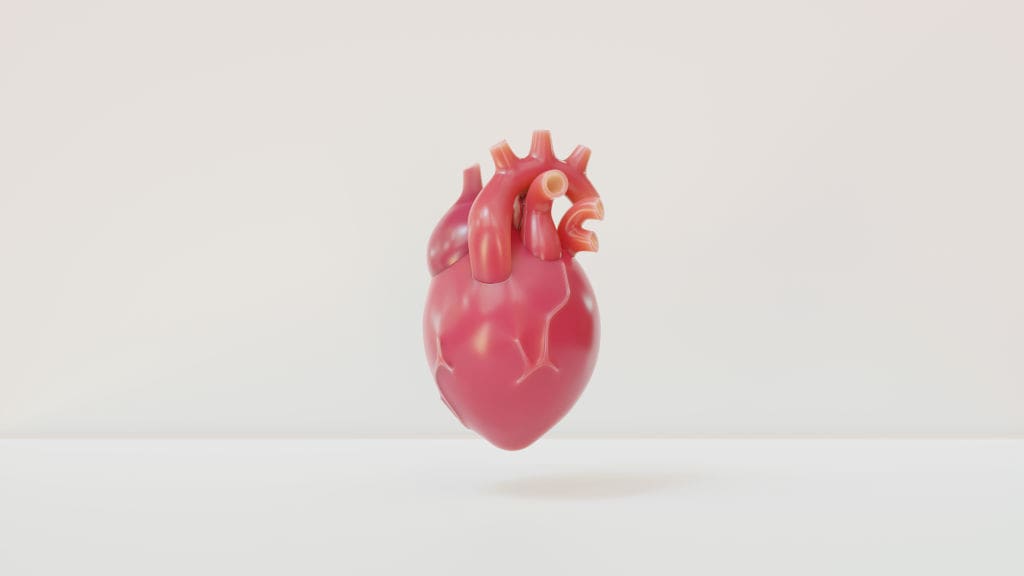Endocarditis is a rare but potentially fatal infection of the heart valves or lining.
This infection occurs when germs (often bacteria) enter the bloodstream from another part of the body. The germ attaches to the lining of the heart valves and destroys it.
The heart valves are essential to the circulation of oxygenated blood around the body. The primary function of the heart valves is to ensure blood flows in the right direction. When infective endocarditis causes vegetation on the valves, the infection releases toxins and enzymes that cause holes in the valves. This results in complications such as leaky valves, heart failure, etc.
The body’s immune system typically eliminates any hazardous bacteria that enter the bloodstream. However, under some conditions, endocarditis can be brought on by bacteria on the skin, mouth, throat, or stomach (intestines).
One such condition that can make a person susceptible to endocarditis is after some surgical or dental treatments. This is because the bloodstream may become contaminated with microorganisms.
Endocarditis can affect anyone. However, it is usually more likely to occur in people with heart-related illnesses or problems. If the infection is not treated, it will lead to inflammation, seriously harming the heart.
In a 17-year population-based study of endocarditis, it was reported that the mortality rate of untreated endocarditis is on the rise. It was also reported that the aging group forms most of the population affected by endocarditis.
How Is Endocarditis Diagnosed and Treated?
Endocarditis is a feared disease. Research has it that only an early diagnosis and treatment can reduce the high mortality rate of this infection. This means that for a patient to be successfully treated for endocarditis, the doctor must have diagnosed the infection early enough to mitigate the harmful effects.
There are cases where endocarditis is diagnosed too late. At times like this, the patient would have been suffering from the deteriorating effect of the infection on the heart. The patient may experience a stroke or heart failure.
Endocarditis patients frequently experience flu-like symptoms such as fever, night sweats, and weakness. These symptoms are non-specific, hence very challenging to identify. This is the reason the symptoms of endocarditis are often misinterpreted as representative of other conditions, such as lymphoma.
A thorough medical history should be taken to avoid any mistake in diagnosis. The record should describe the symptoms, their start, and any pertinent medical history. Additionally, a checkup should also be done, including taking your temperature and listening to your heart.
If a patient has recently undergone any medical treatments, such as heart valve surgery, that may have increased the chance of developing endocarditis, the doctor can learn about it by reviewing the patient’s medical history.
If the doctor suspects endocarditis, the final diagnosis is made using a blood test, echocardiography, or computerized tomography(CT) scan. Let’s examine these tests.
Blood test
Blood tests can be used to find germs or fungi in the bloodstream. The treatment for infective endocarditis differs from that for non-infectious endocarditis. Hence, this is the most crucial test a doctor will carry out.
Echocardiography
A doctor may prescribe echocardiography or cardiac ultrasound. In this process, sound waves are used to create an image. An ultrasound probe (transducer) might be put on the patient’s chest. The transducer directs sound waves toward the heart and captures their reflections. This is called transthoracic echocardiography.
Alternatively, a flexible transducer tube might be inserted into the esophagus and threaded down the neck. Echocardiography scans the heart valve for holes, damaged tissue, or other structural changes. Compared to a transthoracic echocardiogram, transesophageal echocardiography offers far more detailed images of the heart.
CT scan
X-rays are used in a CT scan to create images of the internal organs. The photos are then pieced together on a computer.
It can help locate any pus-filled areas (abscesses) that might have formed on the body.

What If Endocarditis Is Misdiagnosed?
Misdiagnosis has become very popular in the medical field. Sometimes, the mistake is not severe and has no lasting effects. In other situations, the result is fatal or, at the very worst, life-threatening.
If endocarditis is misdiagnosed and treatment is postponed, the effects on the patient could be disastrous and, regrettably, even fatal. A favorable prognosis is more likely the earlier the diagnosis is made.
Also, if treatment is delayed, the more significant the risk of developing other, frequently fatal illnesses like heart failure or stroke. Therefore, a fast diagnosis must be established to reduce the potentially fatal implications of such a disorder on a patient’s life.
Moreover, a wrong diagnosis can also be fatal to a patient. There are cases where a patient is wrongly diagnosed with endocarditis. The patient would now be receiving treatments for such an infection when there is no evidence of vegetative growth of such an infection on the heart valve.
The constant exposure of such a patient to unnecessary antibiotics could result in severe symptoms from the toxic effect of antibiotic therapy.
A medical malpractice claim can be brought against the doctor or the hospital in case of any diagnostic error.
Illustrating The Dangers Of A Misdiagnosed Endocarditis Using Medical Animation
Endocarditis is a deadly infection with high mortality and morbidity. The lawyer handling this case can use medical animation to ensure the claimant receives the appropriate compensation.
Firstly, medical animation can show the jury the heart’s anatomy. At this point, the attorney will use an expert witness to illustrate how the heart’s valves and walls should appear and how they appear after contracting infected endocarditis. They will then be able to attempt to describe the level of suffering the claimant would be experiencing.
Afterward, the irreparable effect of the wrong or late diagnosis can be illustrated using medical animation.
In Bandel v. Friedrich, the appellant was experiencing chills, fever, and sweat. When he was admitted to the hospital of the respondent, he was diagnosed with a urinary tract infection due to the insufficient tests that were carried out.
With time, the health of the appellant deteriorated drastically. Almost at the point of death, it was discovered he had infectious endocarditis. This infection had eaten so much into his heart valve.
In such a case, medical animation can be employed as a visual aid to help the appellant showcase his plight to the jury.
Let’s also consider the case of Enslen v. Kennedy. In this case, the plaintiff was wrongly diagnosed with subluxation rather than infectious endocarditis. Due to the delayed diagnosis, the plaintiff suffered a debilitating stroke.
In this instance, the plaintiff can demonstrate through animation how an early diagnosis would have stopped the situation from becoming as serious as it did. The animation would demonstrate that the treatment would have been successful had it been initiated sooner because delayed treatment typically results in significantly more difficulties.

Conclusion
Fox-AE is a litigation animation company with a proficient team of medical animators that can illustrate any diagnostic negligence of a doctor. In every case, we collaborate closely with attorneys and expert witnesses. This ensures that all relevant case facts and incidents leading up to the injury are well illustrated. Thereby making it easier for the jury to understand the situation and decide in the injured party’s favor.






